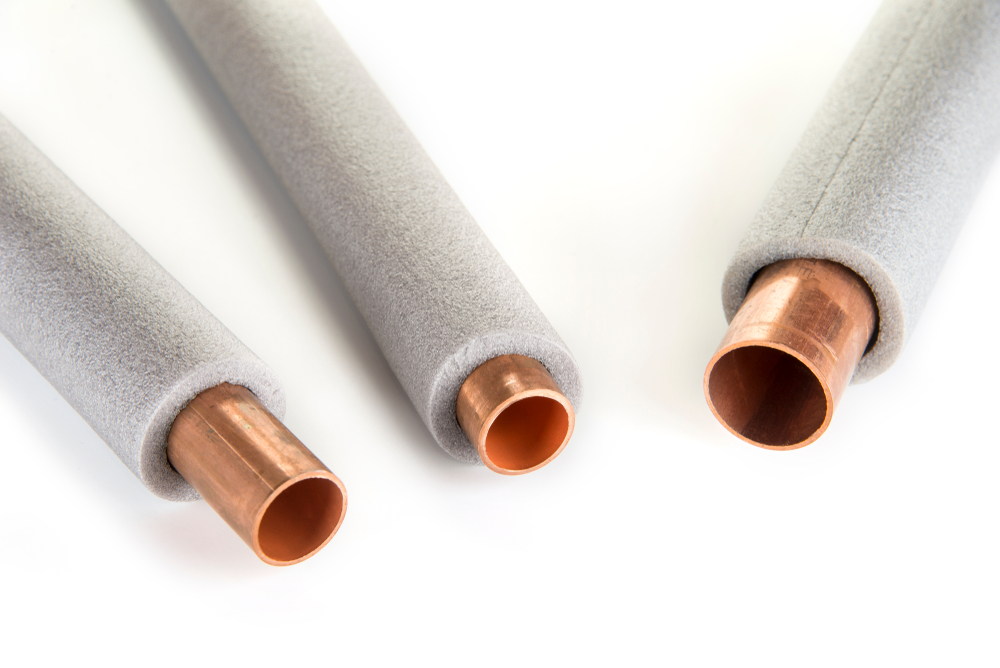
The Complete Pipe Insulation Guide
While you may not pay much attention to your home’s pipes, that will quickly change if they burst on a cold winter night. Fortunately, this problem can be avoided if you take the simple step of having pipe insulation throughout your home’s plumbing system. Rather than have water pipes bursting and causing thousands of dollars in damage to your home, our Boss Plumbing team has all you need to know about pipe insulation.
What are the Benefits of Pipe Insulation?
There are many benefits you’ll gain from insulating your pipes:
- The insulation helps to regulate the temperature surrounding the pipes. This applies to plumbing pipes inside and outside your home, since heat can be both gained or lost via your pipes. During cold weather, this may help lower your energy bills.
- Condensation is minimized when you use pipe insulation. The less moisture your pipes have on them, the odds decrease that they will corrode or rust, which will result in leaks.
- Pipe insulation is a very effective noise reduction tool. As water travels through your pipes, it may get noisy at times. If you don’t enjoy hearing strange noises from your pipes, insulation can solve the problem.
How Does Pipe Insulation Work?
The purpose of pipe insulation is to cut down on humidity around the pipes, which will help to limit the condensation that often builds up on the surface of many pipes. When you think about this, it makes perfect sense. If your home is filled with warm air, cold air around the pipes will produce vapor on the pipe surface. If left unchecked, your pipe will ultimately corrode and leak.
By using almost any type of pipe insulation material, you eliminate water from forming on the pipe, keeping it warm and dry. When selecting pipe insulation, always pay attention to R-valuation, since this can mean the difference between having frozen water pipes or ones that continue to work properly even in the dead of winter.
Different Types of Pipe Insulation
Polyethylene foam
Cheap, easy to install, and very effective, polyethylene foam pipe insulation comes with pre-cut slits that allow you to simply slide it onto your pipes.
Rubber insulation
This insulation can be used on both indoor and outdoor pipes, making it very versatile. Inexpensive and very durable, it can adapt easily to temperature fluctuations. Easy to install, this is a popular choice for many pipes.
Fiberglass
If pipe noise is a problem at your home, fiberglass pipe insulation is a smart choice. It’s also great if you have had problems with burst pipes in the past, since fiberglass insulation works well in very cold temperatures.
Mineral wool
Though not as common as other types of pipe insulation, mineral wool is every bit as effective. However, it does cost about 25 percent more than rubber or foam insulation, so keep this in mind. On the plus side, it is rated very high for its degree of fire-resistance and ability to limit pipe noise.
Foil Pipe Wrap
Known as foil and foam, foil pipe wrap is often used in homes that have very large attics or basements. Very inexpensive, it is good at limiting pipe vibrations and reducing sweating that leads to corrosion.
What is the Most Efficient Pipe Insulation?
Polyethylene foam is considered to be the most efficient form of pipe insulation. We use it often here at Boss Plumbing, since it can be easily installed to any kind of pipe. It also has the highest R-value, meaning it will be the best pipe insulation to keep your pipes warm.
Which Pipe Insulation Best Prevents Freezing?
If you don’t want to be calling our pros here at Boss Plumbing to help repair pipes in your home, rubber insulation needs to be the pipe insulation you use to prevent frozen pipes. Since it is made specifically to adapt quickly to temperature variations, it can protect your pipes from freezing.
Can I Insulate Pipes Myself?
Since most types of pipe insulation are easy to install, you can insulate pipes on your own if you so choose. As we mentioned earlier, foam pipe insulation is made with pre-cut slits that allow the insulation to be easily applied to a pipe. Once you have the insulation in place, you can use pipe wrap or tape to hold it in place. Most types of pipe insulation are very easy to work with, so if you enjoy DIY projects, this is usually an easy one to get done on a weekend.
Should you have copper pipes in your home, you may want to avoid using pipe insulation on these pipes. Remember, copper is naturally resistant to corrosion. However, since there are pros and cons as to whether or not copper pipes require insulation, you may want to consult with us here at Boss Plumbing about this aspect of your home’s plumbing system.
Pipe Insulation Cost
When your home’s pipes need to be insulated, the costs can vary due to a number of factors. If you require professional installation, the cost can range from as little as $100 to perhaps $1,000 or more for complex plumbing systems. Should you take it on as a DIY project, you can save substantially on labor costs. For example, if you select polyethylene foam as your insulation, this can be purchased in six-foot lengths at hardware stores for less than $10 in most areas.
Call the Plumbing Pros
When you have questions about insulating your pipes, call the pros here at Boss Plumbing. Whether you’ve had problems in the past with pipes that have frozen or burst or just want to make sure you never encounter that problem, we’re always here to help. Offering excellent service, fair prices, and professional plumbers you can always trust to get it right the first time, our team is always ready to assist.
